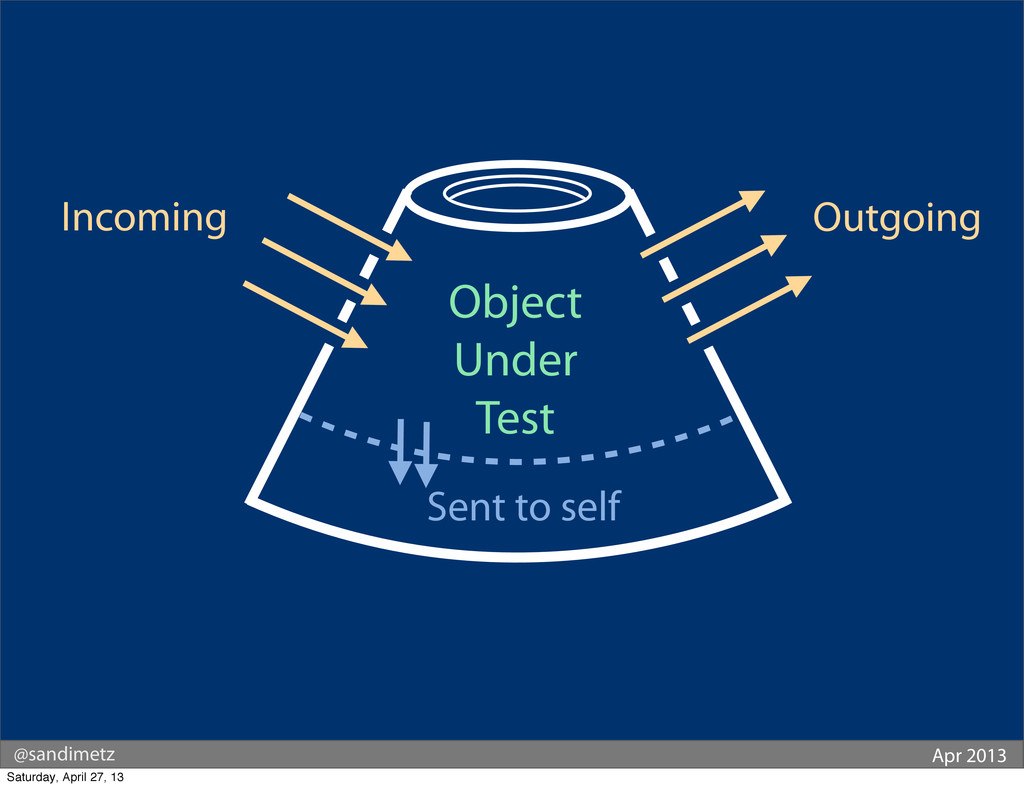| git branch -m old_branch new_branch # Rename branch locally | |
| git push origin :old_branch # Delete the old branch | |
| git push --set-upstream origin new_branch # Push the new branch, set local branch to track the new remote |
Look at the following image...
...it shows an object being tested.
You can't see inside the object. All you can do is send it messages. This is an important point to make because we should be "testing the interface, and NOT the implementation" - doing so will allow us to change the implementation without causing our tests to break.
| Capybara.register_driver :chrome do |app| | |
| Capybara::Selenium::Driver.new(app, | |
| browser: :chrome, | |
| desired_capabilities: { | |
| "chromeOptions" => { | |
| "args" => %w{ window-size=1024,768 } | |
| } | |
| } | |
| ) | |
| end |
NOTE: This post now lives (and kept up to date) on my blog: http://hakunin.com/rails3-load-paths
Do nothing. All files in this dir are eager loaded in production and lazy loaded in development by default.
There are two ways of installing meld on osx (May 2023), using brew and .dmg package (from @yousseb). Since I found https://yousseb.github.io/meld/, I've installed it with .dmg package, but having macOS Ventura Version 13.4 (22F66) in place, it's not even starting for me. So I tried brew installation, and the application is working as expected, including symlink to start it from the terminal.
Using brew formulae: https://formulae.brew.sh/cask/meld
brew install --cask meld
# set meld as your default git mergetool
| #!/bin/bash | |
| cd ~ | |
| # Install JDK | |
| sudo apt-get update | |
| sudo apt-get install openjdk-7-jre-headless -y | |
| # Install & Start ES 0.90.1 | |
| wget https://download.elasticsearch.org/elasticsearch/elasticsearch/elasticsearch-0.90.1.deb |
Each of these commands will run an ad hoc http static server in your current (or specified) directory, available at http://localhost:8000. Use this power wisely.
$ python -m SimpleHTTPServer 8000Sometimes you want to have a subdirectory on the master branch be the root directory of a repository’s gh-pages branch. This is useful for things like sites developed with Yeoman, or if you have a Jekyll site contained in the master branch alongside the rest of your code.
For the sake of this example, let’s pretend the subfolder containing your site is named dist.
Remove the dist directory from the project’s .gitignore file (it’s ignored by default by Yeoman).
- Your class can be no longer than 100 lines of code.
- Your methods can be no longer than five lines of code.
- You can pass no more than four parameters and you can’t just make it one big hash.
- When a call comes into your Rails controller, you can only instantiate one object to do whatever it is that needs to be done. And your view can only know about one instance variable.
You can break these rules if you can talk your pair into agreeing with you.


